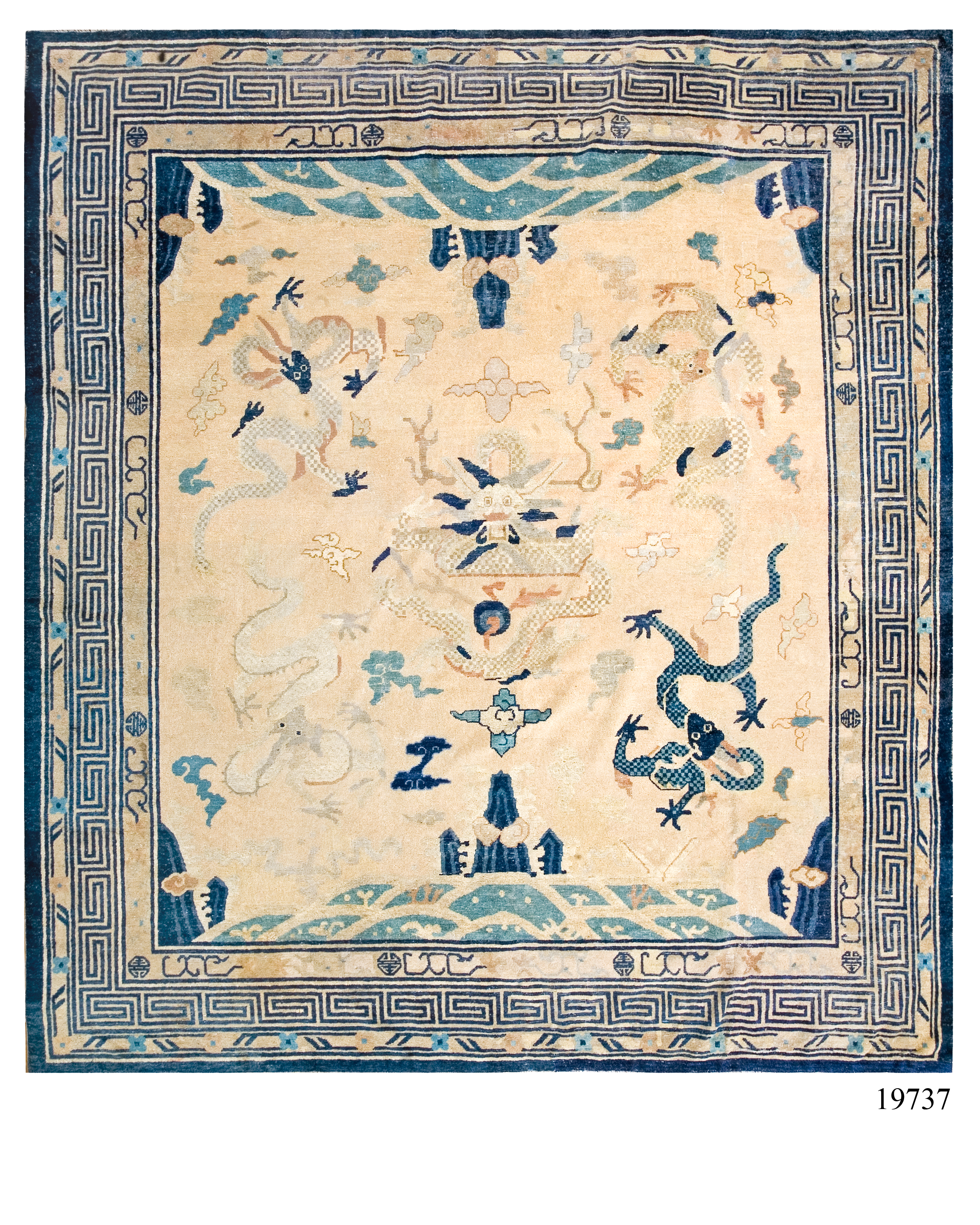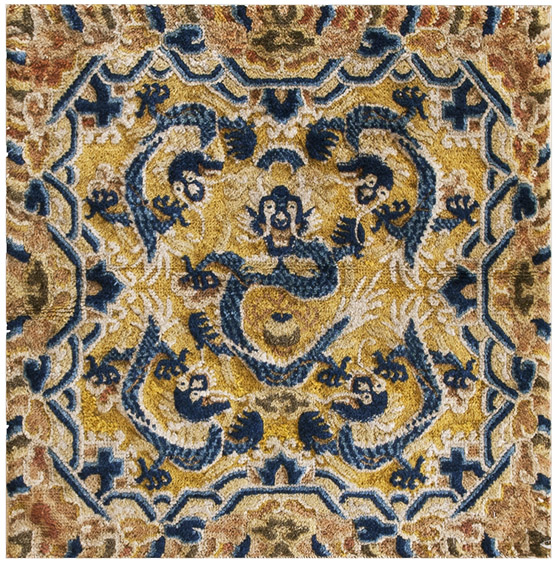Stock ID: 23742
Peking Chinese Silk and Metal Thread Rug
Peking, Northeast China
4’ x 7’
Early 20th Century
Silk pile of Asymmetric Knots with Gold Metal Thread Brocading
Inscribed: “For Palace of Harmony usage only”
Most of the silk and metal thread rugs, ostensibly, according to their inscriptions, made for the Imperial palaces in the Forbidden City, display five writhing, scaly dragons, one central and full faced, the others more in profile in the corners, all executed in knotted silk pile on flat-woven gold grounds. This one, in perfect condition, shows a meditating Buddha with an enormous flaming halo, seated in a Lotus Position, between stipple shaded rocky mounds displaying irises/ peonies. Above is an umbrella signifying royalty, and scattered about are cloud bands, cloud knots and precious objects including: a cord knot, vase, wheel and scroll (?). At the bottom of the field is a scalloped and frothy sea with curling surf and droplets of foam. The usual stylized mountain rising from the waves is absent, replaced by a wave peak. Out of the sea climbs a vine supporting the Buddha’s lotus seat. The Buddha holds some sort of fruit, perhaps a citron or pomegranate, in his left hand, with the other lowered in the position of Calling the Earth to Witness. He is crowned and wears a double jeweled collar with a pendant ornament. His chest is exposed, but otherwise he is robed. The top knot on his head (urna) is consistent with the usual Buddha iconography.











This rug looks to be taken directly from a Buddhist thangka hanging scroll. It was clearly designed as a wall-hanging, and displays none of the usual symmetries of even the most luxurious Chinese dragon silks. There are the remains of hanging loops on the upper plain-weave end band. The main red border shows tilted flowers somewhere between chrysanthemums and peonies, connected by leafy arabesques. The central border shows a T-fret pattern with simple knot corners.
The originally bright gold ground has tarnished to an attractive brownish tone. The metal thread is composed in the usual Chinese manner: with gold leaf adhered to a paper substrate and then wrapped around a silk core. Metal thread without a silk core tends to break and cannot be woven smoothly. The silk pattern stands in relief against the metal thread ground much as in Persian Souf technique rugs. The combination of silk pile and metal ground is found on antique Kashgar carpets from Xinjiang, but the use of the technique in Peking seems to be a circa 1900 innovation. The weave is medium and extremely even.
To view this rug on our website, click here.



















